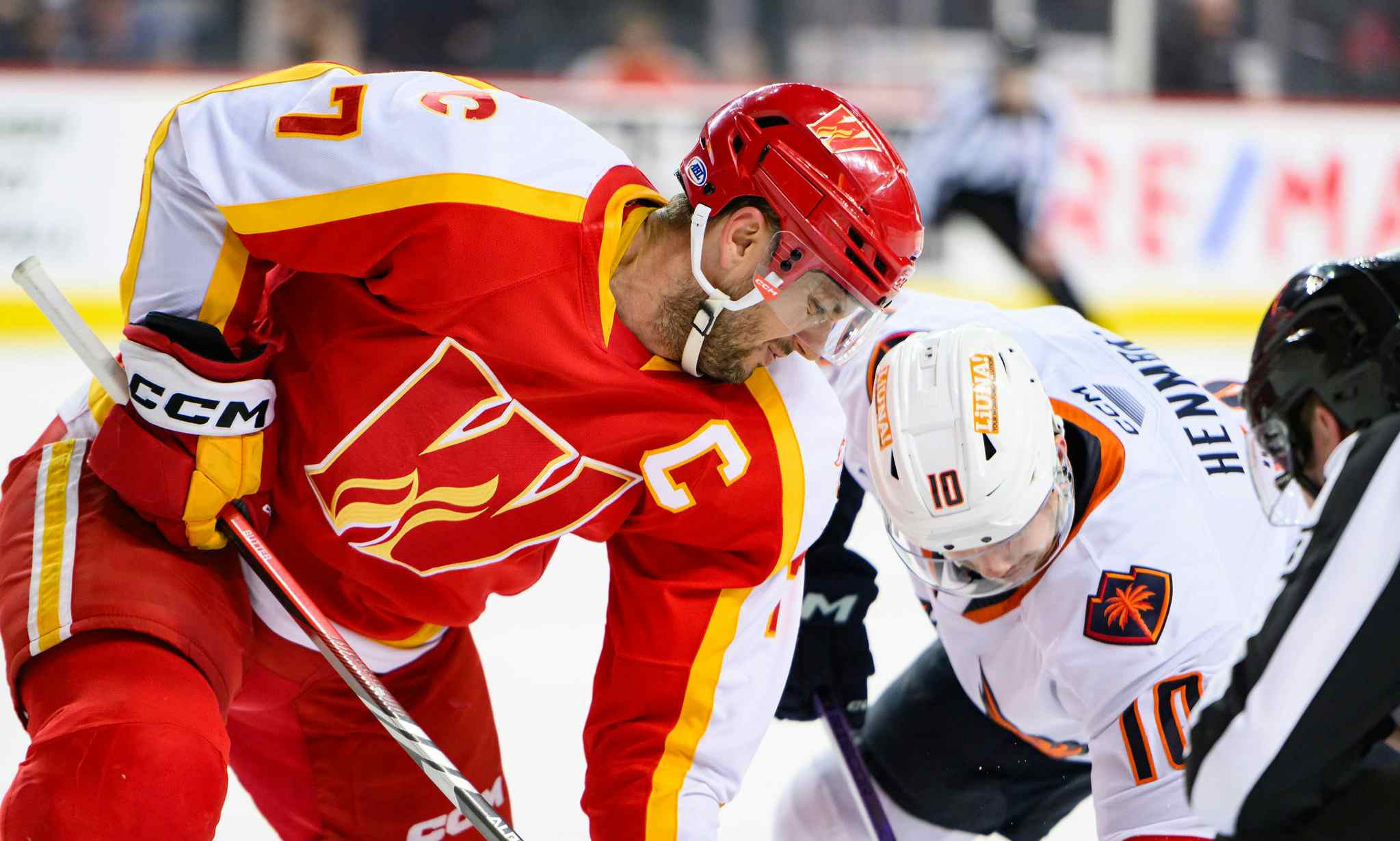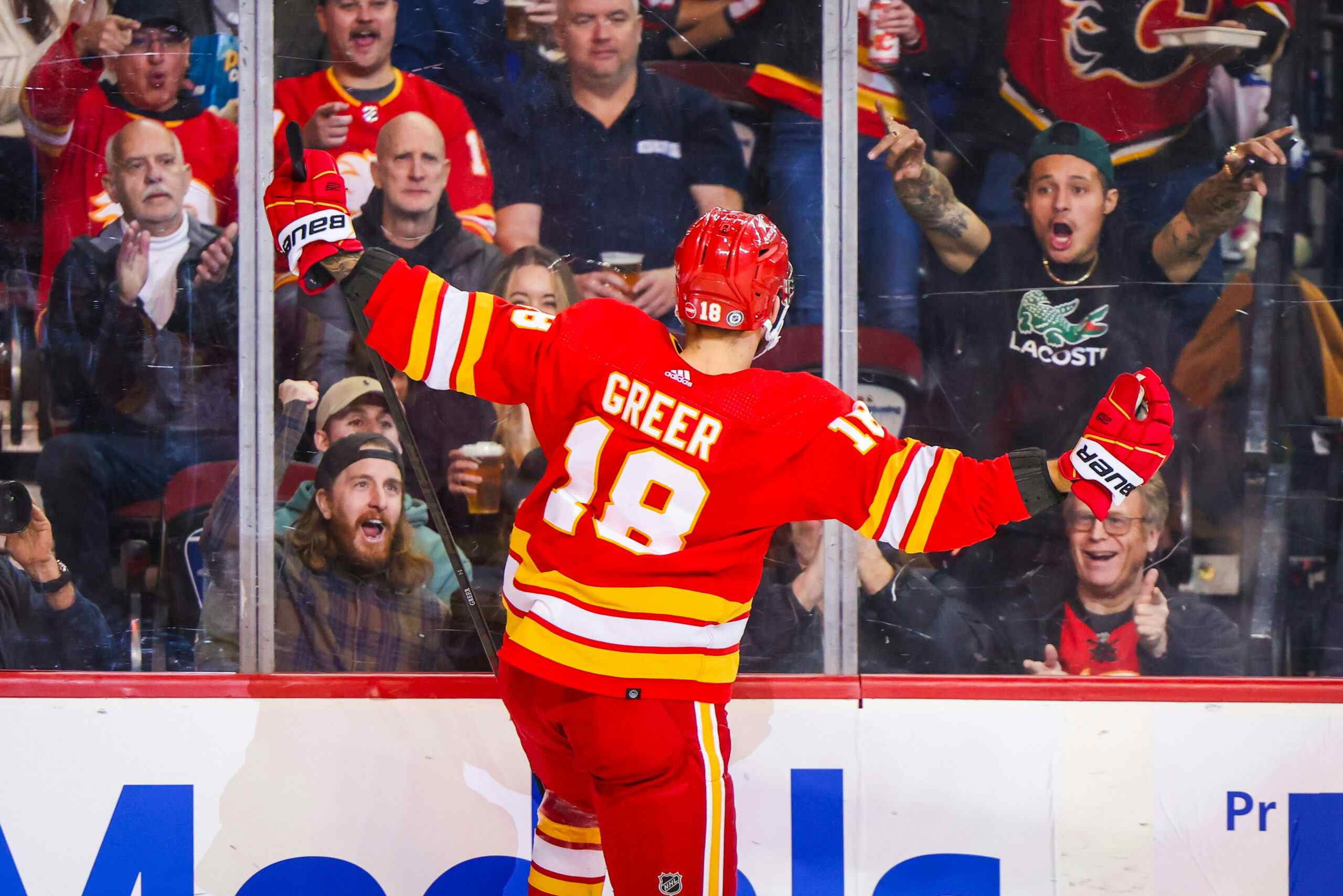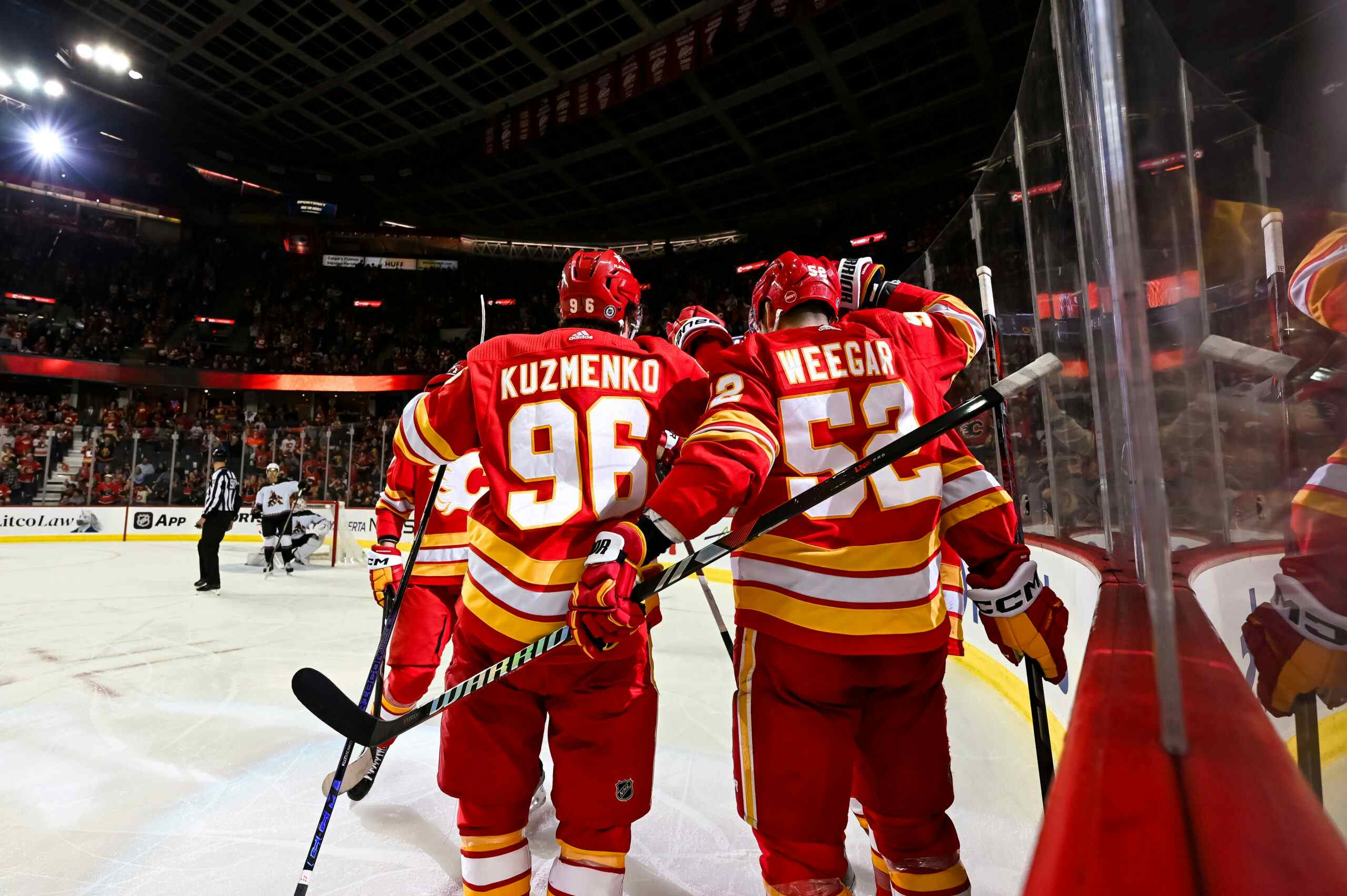Reviewing Flames Zone Starts
By Ryan Pike
9 years agoOne of my off-season projects this summer was to try to gauge the progress of some of Calgary’s younger or emerging players. One of the metrics you can use to try to approximate a coach’s confidence in a player is zone starts.
Zone starts measure what percentage of a player’s shifts begin in the offensive zone at even-strength, ignoring neutral-zone face-offs for simplicity. (e.g., O-Zone Start % is Offensive Starts divided by Offensive + Defensive Starts). A player that starts a lot in the offensive zone needs high ground to succeed, a player that starts mostly in the defensive zone can get high ground on their own. At least, that’s the theory.
Here’s a look at the rolling 10-game zone-start trends for a few different combinations of Flames for the entire season.
MONAHAN & COLBORNE
Sean Monahan was a teenage rookie, thrown into the NHL. Joe Colborne was a center on a depth line, at least initially.

Monahan’s the dark green line, Colborne the light blue one. Monahan got the high ground early and kept it until late in the year, when he was a relative veteran and even newer rookies needed the high ground. Colborne wobbled back and forth a lot, but settled into the “middle” group as a winger, getting roughly even zone starts until late in the year. In short: Monahan was heavily protected until (a) players that needed protecting more arrived or (b) the coaches had confidence that he didn’t need it anymore. Colborne’s usage seems more context and linemate driven.
GALIARDI, BOUMA & BYRON
Three pending RFAs to consider: T.J. Galiardi, Lance Bouma and Paul Byron.

Galiardi (in yellow) got buried in terms of zone starts early-on…and his counting stats weren’t amazing. So he got more and more high ground – primarily with one or both of Brian McGrattan or Kevin Westgarth – and his numbers remained not great. Take from that what you will.
Bouma (blue) was more or less started consistently in the defensive end all year. His stats were just fine considering who he played with, and honestly, his line with Matt Stajan and David Jones was really good at their role when they played together. You can bury Bouma and he’ll be fine, and it seems like the coaches had confidence in him.
Byron (red) was alternately given tons of high ground or was buried throughout his tenure. When he recovered fully from his foot injury (around where that 90% peak is), his play really picked up and he was given less and less high ground through the balance of the year. A healthy Byron appears to drive possession reasonably well regardless of zone starts.
THE BIG THREE (GIORDANO, BRODIE & BACKLUND)

Backlund (in green) had his starts vary a bit during the year, as his role changed quite a bit. Note that during his early zone-start peak early on, he was a healthy scratch. Then he seemed to figure things out. When the Flames were healthy, I think the coaching staff tried to keep his starts even, but injuries forced them to give him more D-starts later on.
Brodie (red) and Giordano (yellow) stayed together most of the year, and tended to get the toughest competition all the time, so their zone starts varied depending on what end the other team’s top guys started in (and the flow of the game).
And SHOCKINGLY, late in the season, the coaching staff discovered that things tended to go well with these three guys on the ice, so their trend lines converge at the end of the year (and trend downwards, as the team’s three best possession players don’t need the high ground as much as the rookies do).
SUM IT UP
Any surprises here? Is there any combination of players you’d like us to compare or contrast? Fire us a line in the comments.
Recent articles from Ryan Pike





